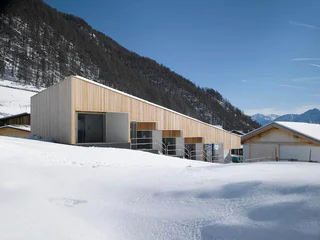
1/4
Nordic Skiing Center
Burgusio/Burgeis, Mals/Malles, Vinschgau/Val Venosta
| Poznaj fascynującą historię Obervinschgau, zwiedzając liczne zabytki i atrakcje turystyczne. Region ten oferuje bogate dziedzictwo kulturowe, które zachwyci każdego miłośnika historii. |

1/4
Burgusio/Burgeis, Mals/Malles, Vinschgau/Val Venosta

1/2
Glorenza/Glurns, Glurns/Glorenza, Vinschgau/Val Venosta

Burgusio/Burgeis, Mals/Malles, Vinschgau/Val Venosta

1/3
Slingia/Schlinig, Mals/Malles, Vinschgau/Val Venosta

1/5
Burgusio/Burgeis, Mals/Malles, Vinschgau/Val Venosta

Tubre/Taufers i. M., Taufers im Münstertal/Tubre, Vinschgau/Val Venosta

Slingia/Schlinig, Mals/Malles, Vinschgau/Val Venosta

1/2
Malles/Mals, Mals/Malles, Vinschgau/Val Venosta

1/8
Sluderno/Schluderns, Schluderns/Sluderno, Vinschgau/Val Venosta

1/5
Glorenza/Glurns, Glurns/Glorenza, Vinschgau/Val Venosta

1/2
Sluderno/Schluderns, Schluderns/Sluderno, Vinschgau/Val Venosta

1/5
Malles/Mals, Mals/Malles, Vinschgau/Val Venosta

1/5
Tubre/Taufers i. M., Taufers im Münstertal/Tubre, Vinschgau/Val Venosta

1/4
Malles/Mals, Mals/Malles, Vinschgau/Val Venosta

1/4
Tubre/Taufers i. M., Taufers im Münstertal/Tubre, Vinschgau/Val Venosta

1/4
Laudes/Laatsch, Mals/Malles, Vinschgau/Val Venosta

1/5
Malles/Mals, Mals/Malles, Vinschgau/Val Venosta

1/7
Burgusio/Burgeis, Mals/Malles, Vinschgau/Val Venosta

1/5
Burgusio/Burgeis, Mals/Malles, Vinschgau/Val Venosta

1/2
Plawenn/Piavenna, Mals/Malles, Vinschgau/Val Venosta

1/5
Tubre/Taufers i. M., Taufers im Münstertal/Tubre, Vinschgau/Val Venosta

1/11
Glorenza/Glurns, Glurns/Glorenza, Vinschgau/Val Venosta

1/2
Tubre/Taufers i. M., Taufers im Münstertal/Tubre, Vinschgau/Val Venosta

1/3
Glorenza/Glurns, Glurns/Glorenza, Vinschgau/Val Venosta

1/8
Tubre/Taufers i. M., Taufers im Münstertal/Tubre, Vinschgau/Val Venosta

1/5
Glorenza/Glurns, Glurns/Glorenza, Vinschgau/Val Venosta

Taufers i. M./Tubre, Taufers im Münstertal/Tubre, Vinschgau/Val Venosta

1/2
Laudes/Laatsch, Mals/Malles, Vinschgau/Val Venosta

1/4
Tarces/Tartsch, Mals/Malles, Vinschgau/Val Venosta

1/3
Sluderno/Schluderns, Schluderns/Sluderno, Vinschgau/Val Venosta